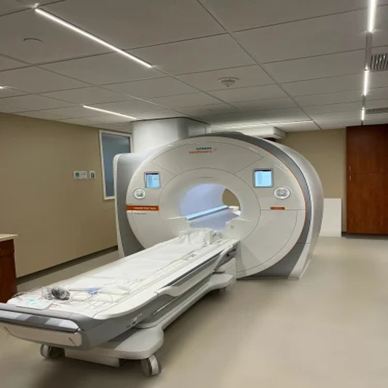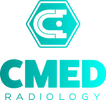
Refurbished 1.5Tand 3.0T MRI Machine A Complete Guide
Refurbished 1.5Tand 3.0T MRI Machine A Complete Guide
The whole exhibition, MRI, is the utmost due modern-day diagnostic application. The hospitals and the diagnostic centers invariably have to face the dilemma of whether to invest in new or refurbished MRI machines. Refurbished 1.5T MRI machine and Refurbished 3.0T MRI machine form a part of this dilemma. This blog, therefore, aims to shed light on both types of machines-from the capabilities, advantages, and use-cases to costs and factors to keep in mind when purchasing refurbished units.
1. Basics First: What is a Refurbished MRI Machine?
A refurbished MRI machine is a pre-owned system that has been restored back to the manufacturer specifications. Refurbishment would include cleaning, replacing worn parts, upgrading software, recalibrating, and performing a quality check to ensure that it meets the safety and performance standards. Usually, there are three features included in refurbished units:
- Cosmetic refurbishment: Focused on the appearance and outside repairs.
- Functional refurbishment: Replacement of an internal part that has damage.
- Technological refurbishment: Hardware/software improvements related to performance.
Both Refurbished 1.5T MRI Machines and Refurbished 3.0T MRI Machines can be truly worthwhile in delivering duplication in the evolving diagnosis when brought from trusted vendors.
2. Main Differences: Refurbished 1.5 T MRI Machine and Refurbished 3.0 T MRI Machine
The most important premise before going through the comparison between the refurbished versions of MRI machines is the difference in 1.5T and 3.0T MRI machines. The “T” here stands for Tesla - a unit used for the measurement of the strength of magnetic fields.
A. Magnetic Strength & Image Quality
- Refurbished 1.5T MRI Machine:
Resolves most routine brain, spine, abdominal, and musculoskeletal scans well enough to make it effective for standard diagnostic use.
- Refurbished 3.0T MRI Machine:
Higher image resolution, faster scan time, and better signal-to-noise ratio (SNR). Ideal for more advanced imaging neurological small structures, cardiac and soft tissue structures.
B. Cost and Operational Requirements
- Refurbished 1.5T MRI Machine:
Usually, the most affordable and economically viable device; requiring lesser operational and maintenance costs.
- Refurbished 3.0T MRI Machine:
An increased initial and operational cost: because as much as it is more powerful, it requires cooling and has increased room requirements.
C. Patient Experience
- For claustrophobic patients, or those who require quick imaging, 1.5T units will typically be better tolerated as they provide a better sense of space.
- 3.0T units are supposed to generate more heat and noise, eventually affecting a patient's comfort during the prolonged duration of scan.
3. Clinical Interventions: When to Use Which?
Refurbished 1.5T MRI Machine vs. Refurbished 3.0T MRI Machine-this ultimately depends on what type of diagnostic services your facility can actually provide.
Applications for Refurbished 1.5T MRI Machine
- Orthopedic and musculoskeletal imaging
- Spinal cord and vertebral assessment
- Abdominal and pelvic imaging
- Routine brain imaging
- Oncology imaging
Refurbished 3.0T MRI Machine Applications
- Detailed brain and neurological imaging.
- Vascular and cardiac studies
- Functional MRI (fMRI) and spectroscopy
- Breast imaging
- Pediatric and oncology requiring high precision
In case your Imaging Center is functioning mainly on general imaging, then a Refurbished 1.5T MRI Machine should ideally fit the bill. On the other hand, a Refurbished 3.0T MRI Machine would be more appropriate for centers that carry subspecialty services, as this machine offers that extra diagnostic finesse.
4. Advantages of Getting Refurbished MRI Machines
Bargains for refurbished imaging stocks over time have become ever more achievable in light of technological advancement and various cheaper options.
Cost Efficient
- Typically, refurbished MRI machines have a cost ranging from 30% to 60% cheaper than new-branded ones.
- Ideal for startups, hospitals that are pennywise, or secondary diagnostic centers.
Faster ROI
- Poised for lower acquisition should translate into faster returns.
- Less financial pain to facilities just starting up.
Quality Guarantee
- Some reputable vendors have standards for refurbishing.
- The machines are tested against calibration, performance, and reliability.
Environmental Concern
- Acquiring renovated facilities relieves sustainability.
- Less electronics waste and conservation of raw materials.
5. Factors to Be Considered While Buying a Refurbished 1.5T or 3.0T MRI Machine
An MRI refurbished system is a sound investment; however, the purchase should be weighed carefully to ensure that it achieves the needs of the facility.
A. Vendor Reputation
- Check whether the company has a history of providing high-quality refurbished MRI systems.
- Request references along with service logs and remediation documentation.
B. Warranty and Support
- Check warranty provisions such as duration and coverage.
- Support should be made available for local installation, calibration, and post-installation service.
C. Compliance & Certification
The machines should be certified in accordance with local government regulatory standards whereby CE/ ISO/ FDA compliance should be checked depending on the location.
D. Software Upgradability
- The system should be available for future software upgrades.
- This becomes important for synchronizing with newer imaging protocols and diagnostic methodologies.
E. Physical Site Requirements
- Refurbished 3.0T MRI Machine may require additional cooling, RF shielding, and power supply.
- It is advisable to carry out a visit to the site prior to the last stage of purchase.
6. Cost Comparison: Refurbished 1.5T MRI Machine vs. Refurbished 3.0T MRI Machine
This is a detailed explanation and help for a decision between the two refurbished options keeping standard budget ranges and necessity in mind:
Feature | Refurbished 1.5T MRI Machine | Refurbished 3.0T MRI Machine |
Average Cost (INR) | ₹1.2 Crore – ₹2 Crore | ₹2.5 Crore – ₹4 Crore |
Operational Cost | Lower | Higher (due to power & cooling) |
Image Quality | Standard | High-Resolution |
Suitable For | Routine Imaging | Advanced Imaging |
Room Requirements | Standard MRI Room | Larger room with more shielding |
ROI Timeline | 2–3 years | 3–5 years |
Maintenance & Parts | Easier to source | May need specialized support |
Patient Comfort | Higher | Moderate |
Conclusion
The final selection between a Refurbished 1.5T MRI Machine and Refurbished 3.0T MRI Machines depends on clinical requirements, budget, and future expansion plans. A Refurbished 1.5T MRI should be considered in the cases of new center startup or mainly handling routine scans.
- A refurbished 3.0T MRI machine should be chosen if the facility is oriented toward neurology, cardiology, or advanced diagnostics.
- Both refurbished machines can give years of reliable service when properly sourced from reputable vendors and maintained, and at a fraction of the cost of a new system.
Key Highlights: Refurbished 1.5T MRI Machine vs Refurbished 3.0T MRI Machine
This comparison table outlines the essential differences, advantages, and practical considerations between Refurbished 1.5T MRI Machines and Refurbished 3.0T MRI Machines to help buyers make an informed decision.
Criteria | Refurbished 1.5T MRI Machine | Refurbished 3.0T MRI Machine |
Magnetic Field Strength | 1.5 Tesla – standard strength for general diagnostic imaging | 3.0 Tesla – double the field strength for advanced diagnostics |
Image Resolution | Good resolution suitable for routine imaging needs | Superior resolution, excellent for detecting small lesions and advanced applications |
Signal-to-Noise Ratio (SNR) | Moderate SNR; sufficient for most clinical scans | High SNR; improves image clarity and diagnostic confidence |
Scan Speed | Standard speed; slightly longer scan times | Faster scans due to higher magnetic strength |
Clinical Applications | General imaging: spine, brain, abdomen, musculoskeletal | Complex imaging: neurology, cardiac MRI, oncology, fMRI |
Patient Experience | Quieter and more comfortable; less heat production | May produce more noise and heat; longer scans may reduce comfort |
Installation Requirements | Less demanding; fits standard MRI rooms | Requires enhanced shielding, power, cooling, and room size |
Power Consumption | Lower operational costs due to lower power usage | Higher operational cost due to increased power and cooling needs |
Initial Investment Cost (INR) | ₹1.2 Crore to ₹2 Crore (approx.) | ₹2.5 Crore to ₹4 Crore (approx.) |
Annual Maintenance Cost | Lower, easier to maintain with readily available parts | Higher, may require OEM-specific or expert support |
Lifespan (with maintenance) | 7 to 10 years | 7 to 10 years |
Image Artifacts | More susceptible to motion and metal artifacts | Reduced artifacts, better for complex cases |
Upgrade Potential | Moderate; limited support for latest software from OEMs | Higher upgrade capability; compatible with latest software platforms |
Availability | Widely available in the refurbished market | Available, but fewer units; demand is increasing |
Ideal Users | Small to mid-size diagnostic centers, budget-conscious hospitals | Specialty hospitals, academic centers, tertiary care institutions |
Regulatory Certifications | CE, ISO, AERB (India), depending on refurbisher | CE, ISO, AERB; always ensure documentation and testing certificates |
Return on Investment (ROI) | Faster ROI due to lower capital investment | Slower ROI but higher imaging revenue potential |
Training Requirements | Standard; most radiologists and technicians are familiar | Specialized training may be required for advanced imaging features |
Environmental Impact | Eco-friendly choice; reuses existing infrastructure | Also environmentally conscious, though larger power needs |
Radiologist Interpretation | Sufficient for most use cases | High-resolution scans enhance diagnostic confidence and reduce interpretation errors |
Service and Parts Support | Easily available; many third-party vendors offer support | OEM-specific; may need contracts or specialized technicians |
Downtime Risk | Lower risk due to simplified systems | Slightly higher; complex hardware may require longer repair timelines |
Patient Throughput | Moderate; suitable for routine outpatient scans | High; faster scans allow higher patient turnover |
Common Refurbishment Brands | GE Signa 1.5T, Siemens Magnetom Avanto 1.5T, Philips Achieva 1.5T | Siemens Skyra 3.0T, GE Discovery 750 3.0T, Philips Ingenia 3.0T |
Compliance with NABH/NABH-Plus | Meets compliance standards when refurbished by accredited vendors | Meets and often exceeds NABH/NABH-Plus standards for tertiary imaging |
Summary of Key Highlights
Refurbished 1.5T MRI Machines are quite favorable for general imaging centers that require a great and very useful system but at very low operational costs.
Refurbished 3.0T MRI Machines generally suit advanced applications such as neurology, oncology, and cardiac imaging, wherein the emphasis is on detail and speed rather than cost.
his key highlights table serves as an instant reference guide for decision makers who are looking to balance the aspect of clinical demand along with capital investment and operational efficiency.
FAQs
Q1: Is it safe to use a refurbished MRI machine?
Yes, these machines are refurbished by licensed vendors; hence, they undergo very stringent checks and restore to original specifications.
Q2: Is the refurbished machine going to have new software?
A refurbished machine can often accept a software update, especially from the same OEM.
Q3: How long can a refurbished 1.5T or 3.0T MRI machine last?
Usually, with the right maintenance, refurbished MRI machines could go for about 7–10 years.
Q4: Are there any government or financing schemes available for refurbished machines?
Yes, a large number of financial institutions and government healthcare initiatives are supporting procurement for assets under such initiatives, particularly in tier-2 and tier-3 cities.

